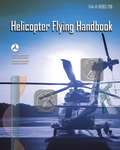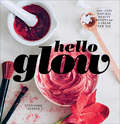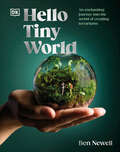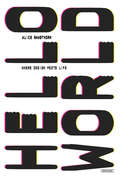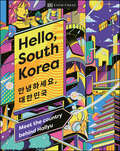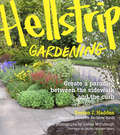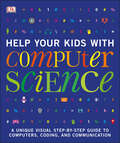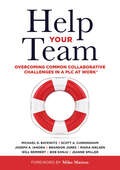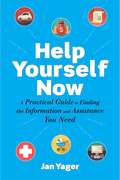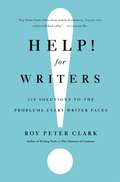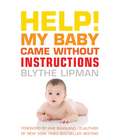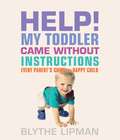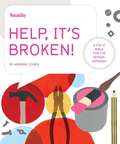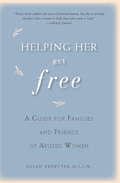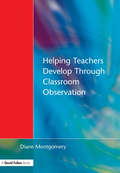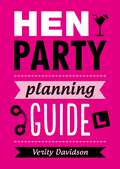- Table View
- List View
Helicopter Flying Handbook: FAA-H-8083-21B (Asa Faa Handbook Ser.)
by Federal Aviation AdministrationAn official publication of the Federal Aviation Administration, this is the ultimate technical manual for anyone who flies or wants to learn to fly a helicopter.If you&’re preparing for private, commercial, or flight instruction pilot certificates, it&’s more than essential reading—it&’s the best possible study guide available, and its information can be lifesaving. In authoritative and easy-to-understand language, here are explanations of general aerodynamics and the aerodynamics of flight, navigation, communication, flight controls, flight maneuvers, emergencies, and more.Also included is an extensive glossary of terms ensuring that even the most technical language can be easily understood. Helicopter Flying Handbook is an indispensable text for any pilot who wants to operate a helicopter safely in a range of conditions. Chapters cover a variety of subjects including helicopter components, weight and balance, basic flight maneuvers, advanced flight maneuvers, emergencies and hazards, aeronautical decision making, night operations, and many more. With full-color illustrations detailing every chapter, this is a one-of-a-kind resource for pilots and would-be pilots.
Hellenistic and Biblical Greek
by B. H. McleanThis Hellenistic Greek reader is designed for students who have completed one or more years of Greek and wish to improve their reading ability and gain a better appreciation for the diversity of the language. The seventy passages in this reader reflect different styles, genres, provenances and purposes, and are arranged into eight parts according to their level of difficulty. Grammatical support and vocabulary lists accompany each passage, and a cumulative glossary offers further assistance with translation. Students are led to a deeper understanding of Hellenistic Greek, and a greater facility with the language. • Includes canonical and non-canonical Christian texts, Septuagint (prose and poetry), Jewish Pseudepigrapha, inscriptions, and Jewish and Hellenistic literary Greek • Includes a web component with more than thirty additional readings for classroom and independent use • Passages offer a glimpse into the everyday life of Hellenistic Greeks, with themes such as sexuality, slavery, magic, apocalypticism, and Hellenistic philosophy.
Hello Glow: 150+ Easy Natural Beauty Recipes for a Fresh New You
by Stephanie GerberAvoid expensive salons and spas with this guide to making more than 150 effective, DIY cosmetics in the comfort of your own home. Forget paying big bucks at a spa, or slathering on overpriced &“mystery cream&” that contains who knows what. Make your own fresh, organic, and effective spa, skincare, hair-maintenance, and cosmetics recipes at home with these 50 beautiful, tried-and-tested tutorials, brought to you by the popular DIY beauty and wellness website Hello Glow. Stephanie believes the journey to well-being can -and should!- be simple and beautiful, natural and stylish. Which is why her site is the trusted destination for organic wellness, nutrition, and skincare ideas. From masks of all flavors and for all skin types, to soothing bath oils and invigorating scrubs, and from treats for your tresses to beauty-boosting DIY cosmetics, Hello Glow has you covered. Featuring a collection of favorites from her site and all-new ideas that Stephanie has cooked up from scratch, Hello Glow readers will discover great new ways to freshen up their face, body, and hair. Enjoy recipes like Whipped Green Tea Moisturizer, Creamy Marsala Lip Gloss, Homemade Fennel Toner, Green Smoothie Detox Body Wrap, Grapefruit Cellulite Scrub, Homemade Natural Sunscreen, Rosemary-Guinness Volumizing Hair Rinse, Blackberry Mask for Your Tresses, DIY Dry Shampoo, and so many more. Start your journey to a healthier life and look with this all-inclusive guide to natural beauty!
Hello Tiny World: An Enchanting Journey into the World of Creating Terrariums
by Ben NewellA friendly journey through the captivating world of terrariums—from the creator of one of the most famous terrariums ever.Hello Tiny World will inspire a wide readership to discover the tiny wonder of a different kind of container gardening in their own homes—no outdoor space needed. How can terrariums teach us about the environment? Can working with plants improve our mental health and well-being? How do we learn to express ourselves and our creativity through these wondrous mini ecosystems?Hello Tiny World is Ben Newell's exploration of these questions as he weaves in his own personal experiences, alongside practical projects with photographed step-by-steps allowing readers to delve into the detail of how to make various terrariums—from beginner terrariums and terrariums on a budget, to more creative and ambitious projects. Those curious to learn about ecology and living sustainably as well as those interested in how plants can help our well-being, mindfulness, and creativity will all be served by this book, alongside horticulturalists who have yet to discover terrariums.
Hello World
by Alice RawsthornHello World is Alice Rawsthorn's definitive guide to design and modern life Design is one of the most powerful forces in our lives. When deployed wisely, it can bring us pleasure, choice, strength, decency and much more. But if its power is abused, the outcome can be wasteful, confusing, humiliating, even dangerous. None of us can avoid being affected by design, whether or not we wish to. It is so ubiquitous that it determines how we feel and what we do, often without our noticing. Hello World explores design's influence on our lives. Written by the renowned design critic Alice Rawsthorn and designed by the award-winning book designer Irma Boom, it describes how warlords, scientists, farmers, hackers, activists and designers have used design to different ends throughout history: from the macabre symbol invented by 18th century pirates to terrorise their victims into surrender, to one woman's quest for the best possible prosthetic legs and the evolution of the World Cup ball. At a time when we face colossal changes, unprecedented in their speed, scale and intensity - from the deepening environmental crisis, to giant leaps in science and technology - Hello World explains how design can help us to make sense of them andto turn them to our advantage. 'Hello World is a new book by Alice Rawsthorn, the one and only, the best design critic in the entire world. She keeps the banner of design flying high. Irma Boom designed it, and Irma is simply the best book designer alive' Paola Antonelli, Senior Curator of Architecture and Design at the Museum of Modern Art, New YorkPraise for Alice Rawsthorn's Yves Saint Laurent'As gripping as a thriller, packed with plot, character and atmosphere' The Times'Rawsthorn's excellent biography isn't merely a story about clothes, but of crises, comebacks and drug clinics, and as a document of the time it is compulsive' Evening Standard'The best book I have ever read about the mesmerising cruelty of fashion' The Spectator'Intelligent and pragmatic. . . this is a page-turner of a book' New Statesman'What a story! A skilful interweaving of the artistic, business and emotional life of a great couture house' Mail on SundayAlice Rawsthorn is the design critic of the International Herald Tribune, the global edition of the New York Times. Her weekly Design column is syndicated worldwide. A trustee of Arts Council England and the Whitechapel Gallery in London, she is chair of trustees at the Chisenhale Gallery and the author of an acclaimed biography of Yves Saint Laurent.
Hello World: Where Design Meets Life
by Alice RawsthornIt is often said that we are living in a new golden age of design. Our gadgets, appliances, and cars are sleeker and more elegant than they’ve ever been; in our free time, we trawl the internet for pictures of flawless minimalist interiors; and even the great industrialist of our time—Steve Jobs—is admired more for his visual savvy than his technological inventiveness. And yet with Instagram and Pinterest at our fingers and great design more available—and more affordable—than ever, we’ve had no guidebook to this ever-fascinating field. Though it’s an inescapable part of our lives, there has been no single book that could, in one fell swoop, tell us everything we need to know about design. Enter Hello World. The design critic for the International Heard Tribune, Alice Rawsthorn has spent many years reckoning with the history of design and with its place in contemporary life, and Hello World is the extraordinary summation of her research and reporting. Rawsthorn takes us on a trip through design that ranges across continents and centuries, and wherever she goes, she discovers inspiring, thrilling examples of resourcefulness, inventiveness, and sheer vision. From the macabre symbol with which eighteenth-century pirates terrorized their victims into surrender, to one woman’s quest for the best prosthetic legs, to the evolution of the World Cup soccer ball, Hello World describes how warlords, scientists, farmers, hackers, activists, and professional designers have used the complex, often elusive process of design to different ends throughout history. Hailed as a “rapid-fire and illuminating ode to contemporary design” (Telegraph) and “an extremely readable tour of the subject” (Financial Times), Hello World is a major work that radically broadens our understanding of what design can mean, and explains how we can use it to make sense of our ever-changing universe.
Hello World: Where Design Meets Life
by Alice RawsthornIt is often said that we are living in a new golden age of design. Our gadgets, appliances, and cars are sleeker and more elegant than they've ever been; in our free time, we trawl the internet for pictures of flawless minimalist interiors; and even the great industrialist of our time--Steve Jobs--is admired more for his visual savvy than his technological inventiveness. And yet with Instagram and Pinterest at our fingers and great design more available--and more affordable--than ever, we've had no guidebook to this ever-fascinating field. Though it's an inescapable part of our lives, there has been no single book that could, in one fell swoop, tell us everything we need to know about design. Enter Hello World. The design critic for the International Heard Tribune, Alice Rawsthorn has spent many years reckoning with the history of design and with its place in contemporary life, and Hello World is the extraordinary summation of her research and reporting. Rawsthorn takes us on a trip through design that ranges across continents and centuries, and wherever she goes, she discovers inspiring, thrilling examples of resourcefulness, inventiveness, and sheer vision. From the macabre symbol with which eighteenth-century pirates terrorized their victims into surrender, to one woman's quest for the best prosthetic legs, to the evolution of the World Cup soccer ball, Hello World describes how warlords, scientists, farmers, hackers, activists, and professional designers have used the complex, often elusive process of design to different ends throughout history. Hailed as a "rapid-fire and illuminating ode to contemporary design" (Telegraph) and "an extremely readable tour of the subject" (Financial Times), Hello World is a major work that radically broadens our understanding of what design can mean, and explains how we can use it to make sense of our ever-changing universe.
Hello, South Korea: Meet the Country Behind Hallyu
by DK EyewitnessKorea is a global phenomenon. K-pop tops the charts, kimchi spices up meals and K-drama dominates TV screens. Now, it&’s time to discover more of the country and culture that&’s captivated the world.It might be a powerhouse of popular culture, but South Korea is so much more than BTS and bibimbap – and with this book, it&’s yours to explore. Dive deeper into the country behind Hallyu and discover why it was long known as the Hermit Kingdom, who the incredible haenyeo divers of Jeju Island are and how age was once calculated in three different ways.Along the way, you&’ll get to know the people who&’ve shaped the country and its customs, uncover the makings of the Hallyu and, of course, explore the global exports we all know and love. How many varieties of kimchi are there? Why did Squid Game receive mixed reactions in Korea? And what, exactly, is the &“glass skin&” beauty effect? Find out all this and more in this must-have book: the perfect introduction to this wonderfully varied country.
Hellstrip Gardening: Create a Paradise between the Sidewalk and the Curb
by Evelyn Hadden Joshua McCulloughThe hellstrip—also known as a boulevard, meridian, and planting strip—is finally getting the attention it deserves! Gardeners everywhere are taking advantage of the space to add curb appeal to their homes, expand the size of their gardens, and conserve more resources. Hellstrip Gardening is the first book to show you exactly how to reclaim these oft-ignored spaces by determining the city and home owner's association rules, choosing plants that thrive in tough situations, designing pathways for accessibility, and much more. Gorgeous color photographs of hellstrip gardens across the country offer inspiration and visual guidance to anyone ready to tackle this final frontier.
Help Your Kids with Computer Science (DK Help Your Kids)
by DKFrom coding languages and hardware to cyberbullying and gaming, this comprehensive homework helper for kids and parents covers the essentials of computer science. This unique visual study guide examines the technical aspects of computers, such as how they function, the latest digital devices and software, and how the Internet works. It also builds the confidence of parents and kids when facing challenges such as staying safe online, digital etiquette, and how to navigate the potential pitfalls of social media. Jargon-free language helps to explain difficult and potentially dread-inducing homework such as hacking, "big data" and malware, while colorful graphics help makes learning about the world of computer science exciting. Whether at home or school, this clear and helpful guide to computer science is the tool you need to be able to support students with confidence. Series Overview: DK's bestselling Help Your Kids With series contains crystal-clear visual breakdowns of important subjects. Simple graphics and jargon-free text are key to making this series a user-friendly resource for frustrated parents who want to help their children get the most out of school.
Help Your Team: Overcoming Common Collaborative Challenges in a PLC at Work
by Brandon Jones Scott A. Cunningham Michael D. Bayewitz Joseph A. Ianora Maria Nielsen Will Remmert Bob Sonju and Jeanne SpillerWith foreword by Mike Mattos <P><P> Build a strong, highly impactful team committed to learning for all. Written by eight professional learning community (PLC) experts, this practical guide addresses the most common challenges educators face when building collaborative teams and working collaboratively. Each chapter offers a variety of templates, processes, and strategies to help your team resolve conflict, focus on the right work, and take collective responsibility for student learning. <P><P> Rely on this book to troubleshoot collaborative learning and team development in your PLC: <BR> Gain an understanding of the PLC framework and the unique qualities of effective collaborative work. <BR> Learn about collaborative teams, what goes into making them, and how to utilize them effectively to drive change and professional development for teachers and other educators. <BR> Become familiar with the ways in which interpersonal issues affect collaborative teams, and gain collaborative tools for conflict resolution and team building for teachers and staff. <BR> Learn how a toxic work culture can contribute to the failure of collaborative learning and how to combat this toxic school culture. <BR> Explore how educators in nontraditional schools or singletons can use the collaborative process to their advantage.
Help Yourself Now: A Practical Guide to Finding the Information and Assistance You Need
by Jan YagerHow to Find Help for Any Situation Although we live in the age of information and everyone is bombarded with potential sources of help, sifting through those possibilities can be a chore. This is where Help Yourself comes in! With this useful reference, author Jan Yager provides an overview of the various situations that most people have to navigate, from calling customer service or reporting a crime to finding credible and reliable information about a business, health, or legal concern. Each chapter includes a brief discussion of an issue, potential scenarios, and listings of relevant national and international organizations. Yager also instructs readers on researching state agencies, so they can contact appropriate organizations closer to home. Important topics of discussion include: Health insurancePersonal financesHousing assistanceEmployment servicesFamily planningK–12 educationCollege selection and fundingSmall business developmentLegal servicesCrime victim resourcesSubstance abuseEmergency preparednessAnd more
Help for Billy: A Beyond Consequences Approach to Helping Children in the Classroom
by Heather T. Forbes"Help for Billy" is a pragmatic manual to help guide families and educators who are struggling with traumatized children. Based on the concept of the neuroscience of emotions and behavior, Heather Forbes provides detailed, comprehensive, and logical strategies for teachers and parents. This easy to read book, with tables, outlines and lists, clears the way for a better understanding of the true nature regarding traumatic experiences affecting the brain and learning. It is a must read for anyone working with a child in the classroom.
Help! For Writers: 210 Solutions to the Problems Every Writer Faces
by Roy Peter ClarkThe craft of writing offers countless potential problems: The story is too long; the story's too short; revising presents a huge hurdle; writer's block is rearing its ugly head. In HELP! FOR WRITERS, Roy Peter Clark presents an "owner's manual" for writers, outlining the seven steps of the writing process, and addressing the 21 most urgent problems that writers face. In his trademark engaging and entertaining style, Clark offers ten short solutions to each problem. Out of ideas? Read posters, billboards, and graffiti. Can't bear to edit yourself? Watch the deleted scenes feature of a DVD, and ask yourself why those scenes were left on the cutting-room floor. HELP! FOR WRITERS offers 210 strategies to guide writers to success.
Help! My Baby Came Without Instructions
by Ame Mahler Beanland Blythe LipmanBringing home baby can be one of the scariest days in a new parent's life. A truly helpful how-to, Blythe Lipman's guide to caring for babies is the perfect resource for first-time parents who wish their new baby came with an instruction manual. Lipman has devoted her life to the gentle art of infant care and offers wise and witty practical advice in this parent-tested, expert-approved book. Filled with invaluable information new parents really need, Lipman includes plenty of true-life stories and guidance to help them through those first nerve-racking months. Help! My Baby Came Without Instructions will have nervous new moms and sleep-deprived dads feeling confident about their parenting skills. Hints on daily routines, sleep patterns, crying, the art and science of diapering, and traveling with a newborn are also provided.
Help! My Toddler Came Without Instructions
by Dr John Duffy Blythe LipmanRaising children is a serious business, especially in this era of two working parents with jam-packed schedules. A helping hand can make all the difference. Nationally known parenting expert Blythe Lipman is on a mission to help parents, offering hundreds of practical tips with a dash of humor. Go from stressed-out, overwhelmed and exhausted to melt-down free and mellow! The purpose of Help! My Toddler Came Without Instructions is to provide parents with quick solutions to help with those hair-raising toddler issues. When some new "toddler troubles" arise, grab the book, find the solution and you'll be back in control of your out-of-control child. Topics include sleeping (ways to transition from crib to bed, naps, creating a friendly sleep environment and nightly rituals and routines), potty training (age discussion, type of potty to use, fears, underwear, charts and issues), and fears (night terrors, stranger anxiety, the dark, monsters and separation anxiety).
Help! My Toddler Came Without Instructions: Practical tips for Parenting a Happy One, Two, Three and Four Year Old
by Blythe LipmanRaising children is a serious business, especially in this era of two working parents with jam-packed schedules. A helping hand can make all the difference. Nationally known parenting expert Blythe Lipman is on a mission to help parents, offering hundreds of practical tips with a dash of humor. Go from stressed-out, overwhelmed and exhausted to melt-down free and mellow! The purpose of Help! My Toddler Came Without Instructions is to provide parents with quick solutions to help with those hair-raising toddler issues. When some new "toddler troubles" arise, grab the book, find the solution and you'll be back in control of your out-of-control child. Topics include sleeping (ways to transition from crib to bed, naps, creating a friendly sleep environment and nightly rituals and routines), potty training (age discussion, type of potty to use, fears, underwear, charts and issues), and fears (night terrors, stranger anxiety, the dark, monsters and separation anxiety).
Help, It's Broken! A Fix-it Bible for the Repair Impaired
by Arianne CohenNo matter where you live and whether you rent or own, one day you'll wake up in the morning and something will be broken. This book will come in handy to avoid panic and home repair disasters because a good reference guide is just what you need when there's a geyser in your living room. Count on this manual to tell you what to do or who to call to get the mess fixed.This useful book includes chapters on: Walls, Doors, Windows and Floors; Electricity; Appliances; Plumbing; Heat and Ventilation; Pests; Frugal Fixing and more. Each section is illustrated and explains the basics of how things operate before detailing how to fix them in a few easy steps. It also teaches you not only how to fix things yourself but also how to get someone who knows what they're doing to fix things for you and what questions to ask. This quick and informative guide can save you thousands of dollars and a lot of hassle. From unclogging drains to expelling rodents, from repairing stained carpet to fixing your dishwasher, you can depend on this book in any number of household catastrophes. Even if you can barely tell a nut from a bolt, Help! It's Broken is your quick reference guide for all home-repair solutions. Consider it a toolbox essential.
Helping Her Get Free: A Guide for Families and Friends of Abused Women
by Mssw Susan BrewsterSeal Press originally published Helping Her Get Free with the title To Be an Anchor in the Storm. The survivor of an abusive relationship herself and a licensed counselor of abused women for more than a decade, Susan Brewster teaches readers how to recognize the signs of abuse, handle negative feelings, become an effective advocate, deal with the abuser, and more. With a new introduction and updated resource section, this straightforward and compassionate book offers the information needed to help give strength to women who are trying to break free.
Helping Orphaned or Injured Wild Birds: Storey's Country Wisdom Bulletin A-210 (Storey Country Wisdom Bulletin Ser.)
by Diane ScarazziniTo Help or Not to Help? When faced with an injured bird or orphaned nestling, most people want to help but don’t know how – and also fear doing more harm than good. In fact, many wild birds that appear to be in trouble don’t need assistance at all. How do you know whether a bird needs help? How do you know what sort of help the bird needs? In Helping Orphaned or Injured Wild Birds, you’ll find all the information you need on when and how to assist all kinds of birds, from wrens to raptors. You’ll learn how to: Identify whether a bird needs rescuingHelp a baby bird that’s fallen from its nestIdentify the age and species of an injured of orphaned birdPrepare emergency rations for a baby birdAdminister basic bird first-aid Locate a professional wildlife rehabilitator
Helping Teachers Develop through Classroom Observation
by Diane MontgomeryEnhancing the quality of teaching and learning in schools for the benefit of the teacher and pupil is not a matter of quick 'tips for teachers.' It requires a fundamental review by every teacher of his or her own performance and its effects on learners. A significant way of achieving this is by systematic classroom observation and feedback from professional colleagues. This book describes how to set up and engage in classroom observation using well-established professional sampling frames. It illustrates how to use focused appraisal sessions and how to deliver the feedback interview. Underpinning the author's practical guidance is a tried and tested theory of improving teaching and learning for school development and performance management. The approach is practical, positive and supportive and is designed for senior staff, SENCOs, teachers in primary and secondary schools and those taking INSET and CPD courses.
Helvetius: His Life and Place in the History of Educational Thought (International Library of Sociology #Vol. 229)
by Ian CummingPublished in 1998, Helvetius is a valuable contribution to the field of Sociology and Social Policy.
Hen Party Planning Guide
by Verity DavidsonHen parties come in every shape and size, but what unites them is that they are a wonderful opportunity to celebrate love and marriage, and to have an awesome party! This guide, packed with tips to help you plan an unforgettable bachelorette party to suit every budget, is the perfect antidote to planning disasters.
Hen Party Planning Guide
by Verity DavidsonHen parties come in every shape and size, but what unites them is that they are a wonderful opportunity to celebrate love and marriage, and to have an awesome party! This guide, packed with tips to help you plan an unforgettable bachelorette party to suit every budget, is the perfect antidote to planning disasters.
Henderson's Materia Medica
by George Lucas James FergusonNow in its third edition, this standard text meets the need for a single source of detailed information on the drugs in use in English-speaking countries. Dr. Henderson based his book on the British Pharmacopoeia, and the revisers have included the preparations in the fourteenth revision of the United States Pharmacopoeia, pointing out differences and similarities in terminology and usage. Drugs are arranged by English rather than Latin titles.
